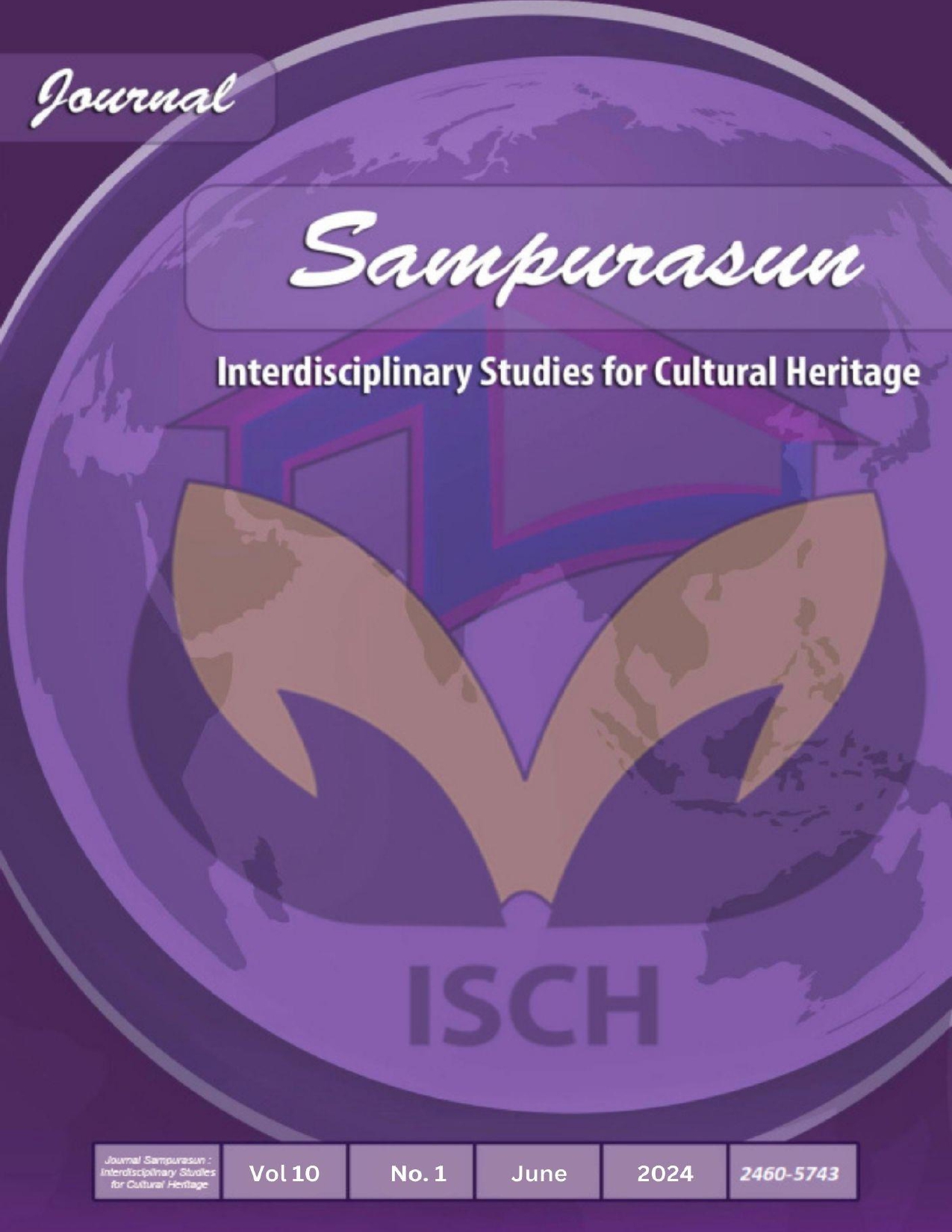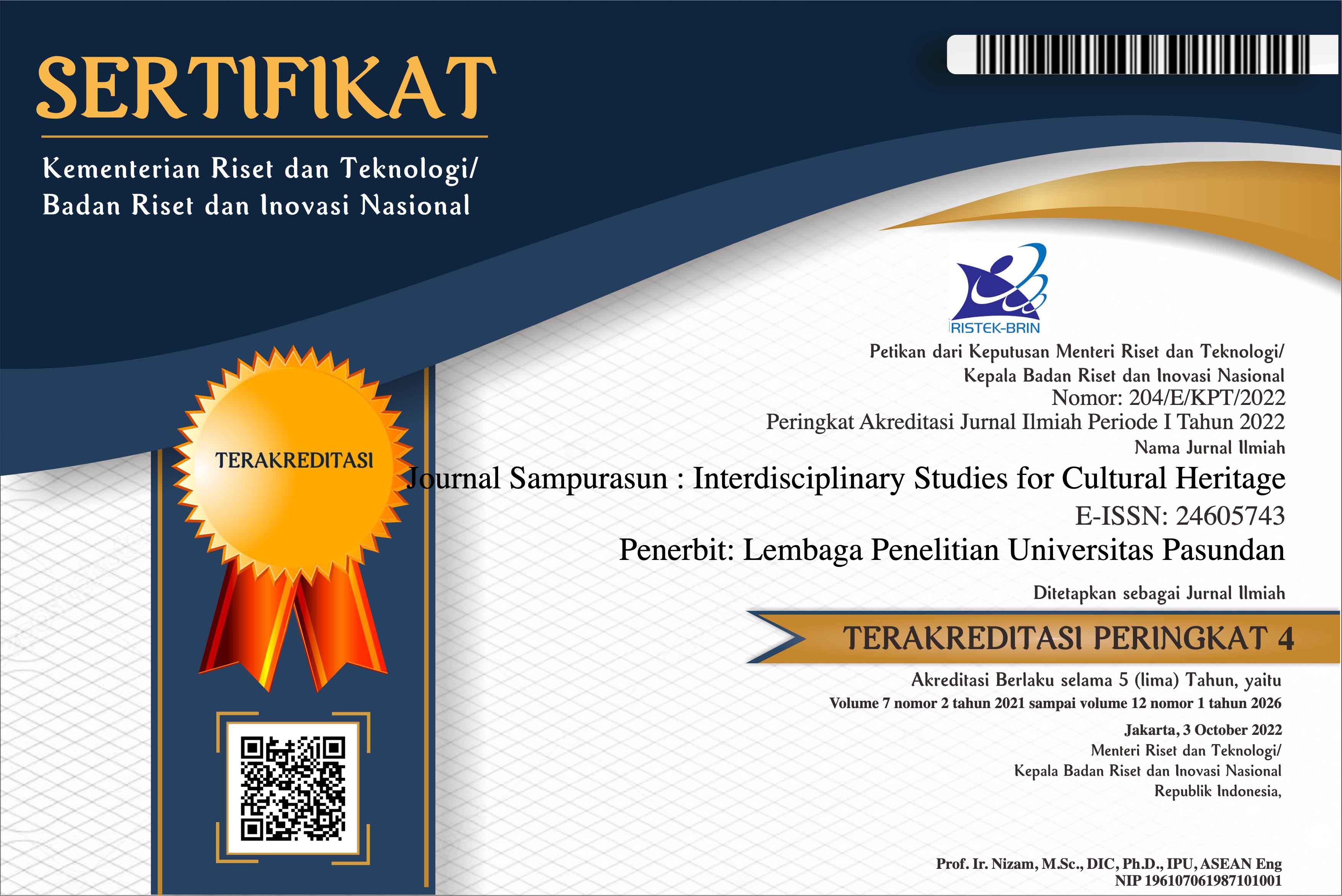CLUSTERING SUNDANESE CULTURAL ARTICLES ON GOOGLE SCHOLAR: A BIBLIOMETRIC REVIEW
DOI:
https://doi.org/10.23969/sampurasun.v10i1.11431Keywords:
Sundanese Culture, Bibliometric Analysis, Google ScholarAbstract
This study aims to analyze the bibliometric characteristics of articles on Google Scholar indexed Sundanese Culture published in 2016-2021 which were accessed in June 2022. Methods: We conducted a bibliometric analysis and published content in the Google Scholar database. Results: Based on the specified protocol, 219 articles about Sundanese culture over the last 6 years met the inclusion criteria. The frequency of articles is spread across 195 national and international journals with the use of Indonesian language articles 153 articles (70%) and 67 articles (30%) using English. Three ranks of affiliated institutions that are productive in publishing articles on the theme of Sundanese culture, namely Padjadjaran University (39 articles), Universitas Pendidikan Indonesia (21 articles) and Universitas Islam Negeri Sunan Gunung Djati (21 articles). Conclusion: Over the last 6 years scientific publications on the theme of Sundanese culture have provided an overview of the dynamics and value factors of local wisdom identity and cultural preservation in the aspects of art, language, tourism development, character education and cultural and religious synergy between Sundanese and Islam. In terms of various scientific backgrounds and/or study programs, researchers see that the field of communication studies is the most productive "trend" in studying Sundanese cultural themes, so that there is an opportunity to foster further discussion and research on Sundanese culture in certain disciplines and/or in an interdisciplinary manner. multi or cross disciplinary can be a common concern.
Downloads
References
Ahmadi, H., Gholamzadeh, M., Shahmoradi, L., Nilashi, M., & Rashvand, P. (2018). Diseases diagnosis using fuzzy logic methods: A systematic and meta-analysis review. Computer Methods and Programs in Biomedicine, 161, 145–172. https://doi.org/10.1016/j.cmpb.2018.04.013
Chen, C., Dubin, R., & Kim, M. C. (2014). Emerging trends and new developments in regenerative medicine: A scientometric update (2000—2014). Informa UK. https://doi.org/10.1517/14712598.2014.920813
Dienaputra, R. D. (2011). Sunda: Sejarah, Budaya dan Politik. Sastra Unpad Press.
Google Scholar. (n.d.). [Computer software]. https://scholar.google.com/
Hugar, J. G., Bachlapur, M. M., & Gavisiddappa, A. (2019). Research Contribution of Bibliometric Studies as Reflected in Web of Science from 2013 to 2017. Library Philosophy and Practice.
Mansyur, M., Yusuf, A. A., Suryana, C., Soeardi, E. K., Ruskawan, A., Priangani, A., & Utama, W. (2022). Tri JAtidiri Paguyuban Pasundan. YPT Pasundan.
Nur Alam, G., Nurhasan Affandi, R., & Sudirman, A. (2019). Strategi Budaya Sunda Menhadapi Globalisasi Budaya Populer: Studi Tentang Kesenian Daerah Jawa Barat Menurut Perspektif Keamanan Kultural. Indonesian Journal of International Relations, 3(1), 102–118. https://doi.org/10.32787/ijir.v3i1.88
Publish or Perish. (n.d.). [Computer software]. https://publish-or-perish.en.softonic.com/
Suryalaga, H. R. H. (2003). Kasundaan Rawayan Jati. Wakana Raksa Sunda.
Vos Viewer. (n.d.). [Computer software]. https://www.vosviewer. com/)
Downloads
Published
Issue
Section
License
Copyright (c) 2024 Journal Sampurasun : Interdisciplinary Studies for Cultural Heritage

This work is licensed under a Creative Commons Attribution 4.0 International License.
Copyright Notice
Authors should not withdraw their submitted papers because the withdrawal wastes voluntary works devoted by an associate editor and reviewers. But, we accept the withdrawal of a submitted paper if authors have unavoidable reasons. In the event that a manuscript is to be withdrawn from submission to Sampurasun Journal, a letter must be sent to the editorial office requesting withdrawal by e-mail (sampurasunjournal@unpas.ac.id) with its scanned PDF file, before the notification of acceptance for publication.
The withdraw request letter must include the following information. Paper ID, Paper title, Authors names, Reason why the paper must be withdrawn, and Date and signatures of all the authors (or signature of the contact author).
If only the contact author signs the letter, he/she must obtain the agreement of the withdrawal from all the other authors and the letter must include the description that all the other authors agreed the withdrawal. The journal will not withdraw a manuscript from peer review until such a letter has been received. Authors must not assume their manuscript has been withdrawn until they have received appropriate notification from the editorial office. Withdrawal of a manuscript subsequent to acceptance for publication will only be granted in the most exceptional of circumstances.
After the paper is accepted for publication, the withdrawal is not permitted in principle. The authors must always pay the charge even if the withdrawal is permitted. Any request of withdrawal that does not follow the above procedure is treated as invalid. If illegal submission, e.g., plagiarized or duplicate submission, is found for a paper, the withdrawal of the paper will never be permitted and the authors will be punished based on the rule. It is not acceptable practice to withdraw a manuscript in the event of acceptance at another journal. This constitutes dual submission. The editorial office of the other journal will be notified of your actions. In such circumstances Sampurasun ISCH may chose to impose appropriate punitive action subject.
Withdrawal Penalty
Author is not allowed to withdraw submitted manuscripts, because the withdrawal is waste of valuable resources that editors and referees spent a great deal of time processing submitted manuscript, money and works invested by the publisher. If author still requests withdrawal of his/her manuscript when the manuscript is still in the peer-reviewing process, author will be punished with paying $200 per manuscript, as withdrawal penalty to the publisher. However, it is unethical to withdraw a submitted manuscript from one journal if accepted by another journal. The withdrawal of manuscript after the manuscript is accepted for publication, author will be punished by paying US$500 per manuscript. Withdrawal of manuscript is only allowed after withdrawal penalty has been fully paid to the Publisher. If author don't agree to pay the penalty, the author and his/her affiliation will be blacklisted for publication in this journal. Even, his/her previously published articles will be removed from our online system.


















